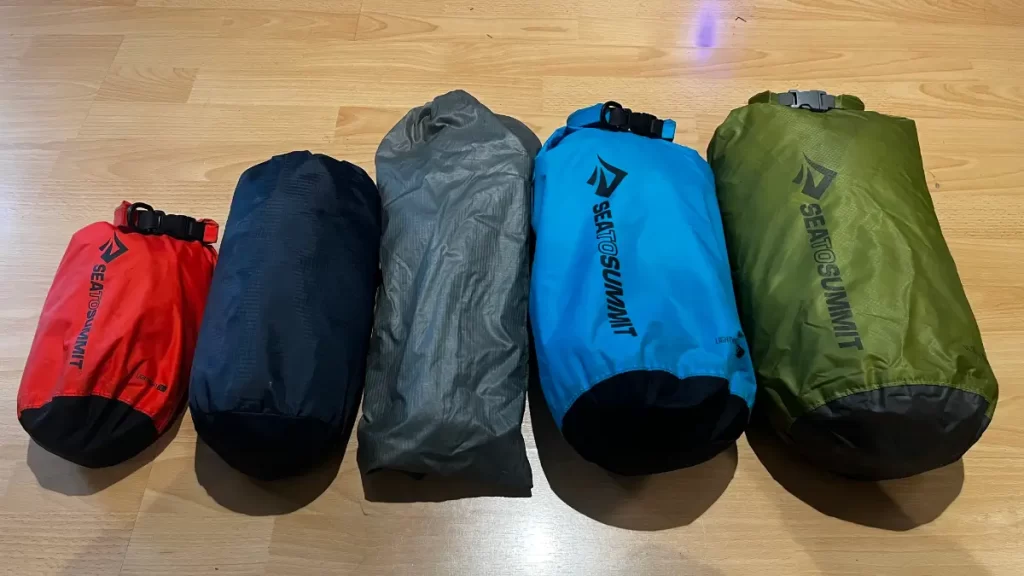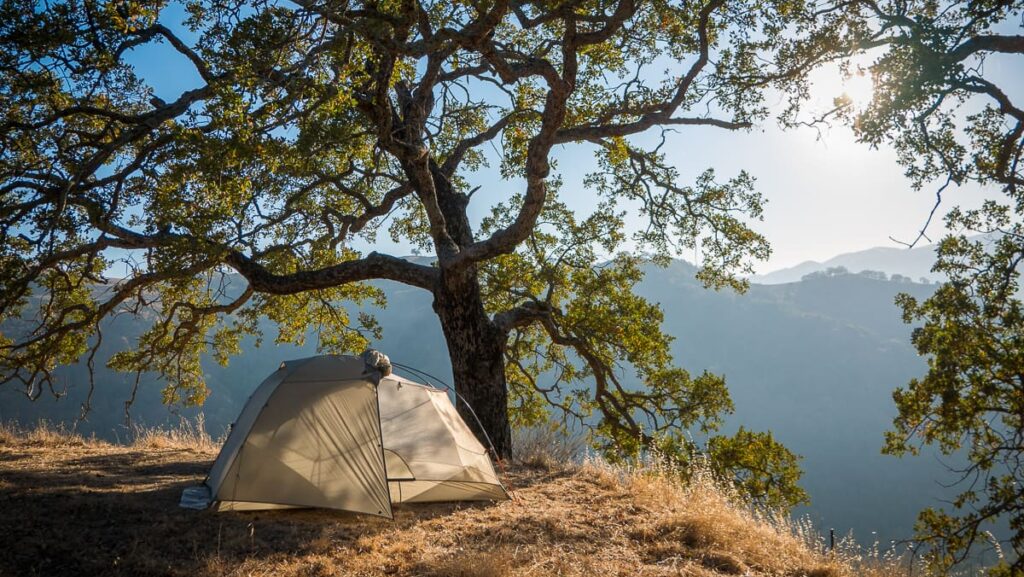Top 10 Mistakes Beginner Backpackers Make and How to Avoid Them

Backpacking is an incredible way to connect with nature and challenge yourself, but let’s be honest—it comes with a learning curve. First trips are often where you figure out what works and what doesn’t, sometimes the hard way. The good news? You don’t have to make all the rookie mistakes yourself. By knowing what to avoid, you can save yourself a lot of frustration (and maybe even some sore shoulders).
Here are the top 10 mistakes beginner backpackers make—and how to avoid them—so you can hit the trail with confidence and actually enjoy the journey.
Disclosure: This post contains affiliate links. As an Amazon Associate, I earn from qualifying purchases. I only recommend products I use and trust.
1. Bringing Too Much Gear
Let’s start with the classic: overpacking. It’s tempting to bring everything you think you might need “just in case,” but here’s the truth—carrying a heavy pack is a fast track to misery. Every ounce feels heavier with each mile, and you’ll quickly regret lugging around extras like that third pair of pants or your luxury hammock.

How to avoid it: Focus on the essentials. Shelter, sleeping system, food, water, and weather-appropriate clothing should be your priorities. Skip the “just in case” items and trust your gear. If you’re not sure where to start, grab my Beginner’s Backpacking Gear Checklist for a simple guide to packing light and smart. Your back will thank you.
2. Packing the Wrong Foods
Food can make or break your trip. Some beginners pack bulky, heavy items like canned soup or fresh fruit, which add unnecessary weight. Others don’t pack enough calories and end up running low on energy halfway through the hike. Both approaches can lead to a miserable time.

How to avoid it: Choose lightweight, calorie-dense foods like dehydrated meals, trail mix, and energy bars. Plan for about 2,500–3,000 calories a day, depending on how hard you’re hiking, and pack a little extra for emergencies. Also, test your meals ahead of time—finding out you hate your dinner after a long day on the trail isn’t fun.
3. Choosing the Wrong Footwear
If there’s one thing that can ruin a trip faster than bad weather, it’s bad footwear. Ill-fitting boots or shoes that aren’t built for the terrain can lead to blisters, sore feet, or worse. And trust me, every step feels ten times harder when your feet are hurting.

How to avoid it: Invest in hiking boots or trail runners that fit well and match the type of trail you’ll be hiking. Break them in on shorter hikes before your trip, and don’t skimp on good socks—moisture-wicking merino wool is your friend.
Pro tip: Bring a small blister kit with moleskin or blister pads. Hot spots happen, even with great shoes, so be ready to address them early.
4. Skipping a Pre-Trip Gear Check
New gear can be exciting, but heading out on the trail without testing it first is a gamble. Whether it’s a tent you’ve never pitched or a stove you’ve never used, trying to figure out how things work mid-trip is the last thing you want to do.
How to avoid it: Set up your gear at home or in your backyard before your trip. Pitch your tent, light your stove, and pack your backpack to make sure everything works and fits as expected. This quick prep step can save you a lot of hassle—and maybe even a few curse words.
5. Neglecting Proper Route Planning
Planning is key to a successful backpacking trip, but some beginners skip this step or rely too heavily on apps. Without a solid plan, you could miss water sources, hike further than expected, or struggle to find a campsite.

How to avoid it: Research your trail thoroughly. Study maps, mark water sources, and identify potential campsites. Plan your daily mileage based on your fitness level, and don’t overestimate what you can handle with a loaded pack.
Pro tip: Always carry a physical map and know how to use it. Apps like Gaia GPS are great, but batteries die, and cell service can be spotty.
6. Failing to Account for Weather
It’s easy to look at the forecast and assume the weather will cooperate, but conditions in the backcountry can change in a flash. Rain, wind, or unexpected cold can leave you wet, cold, and miserable if you’re not prepared.
How to avoid it: Pack layers for a variety of conditions, including a rain jacket, a lightweight insulating layer, and dry socks. Even in summer, temperatures can drop significantly at night. Staying warm and dry is essential for comfort and safety.
Pro tip: Use waterproof stuff sacks to keep your sleeping bag and clothes dry—because nothing’s worse than crawling into a wet sleeping bag at the end of a long day.
7. Running Low on Water
Dehydration is no joke. It’s easy to forget to drink enough water on the trail, especially if you’re focused on covering miles. If you run out, things can go south quickly.

How to avoid it: Plan your water needs by checking for reliable sources along your route. Carry a water filter or purification tablets and drink consistently throughout the day. Don’t wait until you’re thirsty—by then, you’re already dehydrated.
Pro tip: Bring electrolyte powders to replenish salts and keep your energy levels up. They also make plain water a little more interesting.
8. Overlooking Leave No Trace Practices
Backpacking is about enjoying the wilderness, not harming it. But some beginners unintentionally leave behind trash, camp too close to water, or disturb fragile ecosystems. This takes a toll on the environment and ruins the experience for others.
How to avoid it: Follow Leave No Trace principles. Pack out all trash (even food scraps), camp at least 200 feet from water sources, and avoid trampling vegetation. Respect wildlife and other hikers by minimizing your impact.
9. Losing Track of Organization
It’s easy to start your trip with a perfectly packed bag, only to end up with a chaotic mess by day two. Scrambling to find your headlamp or snacks wastes time and adds unnecessary stress.

How to avoid it: Use stuff sacks or zippered pouches to keep your gear organized by category. Group similar items—like food, clothing, and toiletries—and always return them to the same spot after use. Staying organized makes life on the trail a whole lot easier.
10. Overestimating Your Abilities
Ambition is great, but overestimating your stamina or underestimating the difficulty of a trail can lead to exhaustion—or worse, injuries. Carrying a full pack is harder than it looks, and it’s important to pace yourself.
How to avoid it: Start with shorter, easier routes for your first trip. Gradually build up to longer distances and tougher terrain as you gain experience. Take breaks when you need them, and don’t hesitate to adjust your plans if necessary.
Pro tip: Keep track of your pace early in the hike. If you’re breathing too hard, slow it down. A steady pace helps you conserve energy for the long haul.
Final Thoughts

Backpacking is a journey of learning, growth, and connection with nature. While mistakes are part of the process, avoiding the big ones can make your first trip more enjoyable—and keep you coming back for more.
Pack smart, plan well, and hit the trail with confidence. You’ve got this!
Affiliate Disclosure
This page contains affiliate links. If you click on one of these links and make a purchase, I may earn a small commission at no additional cost to you. These commissions help support the creation of free content and resources for the backpacking community. Rest assured, I only recommend products that I personally use and trust to enhance your backpacking experience. Thank you for your support!
Join Our Community of Adventure Seekers!
Get the latest backpacking tips, gear guides, and trail inspiration sent directly to your inbox.
Sign up to start exploring!

